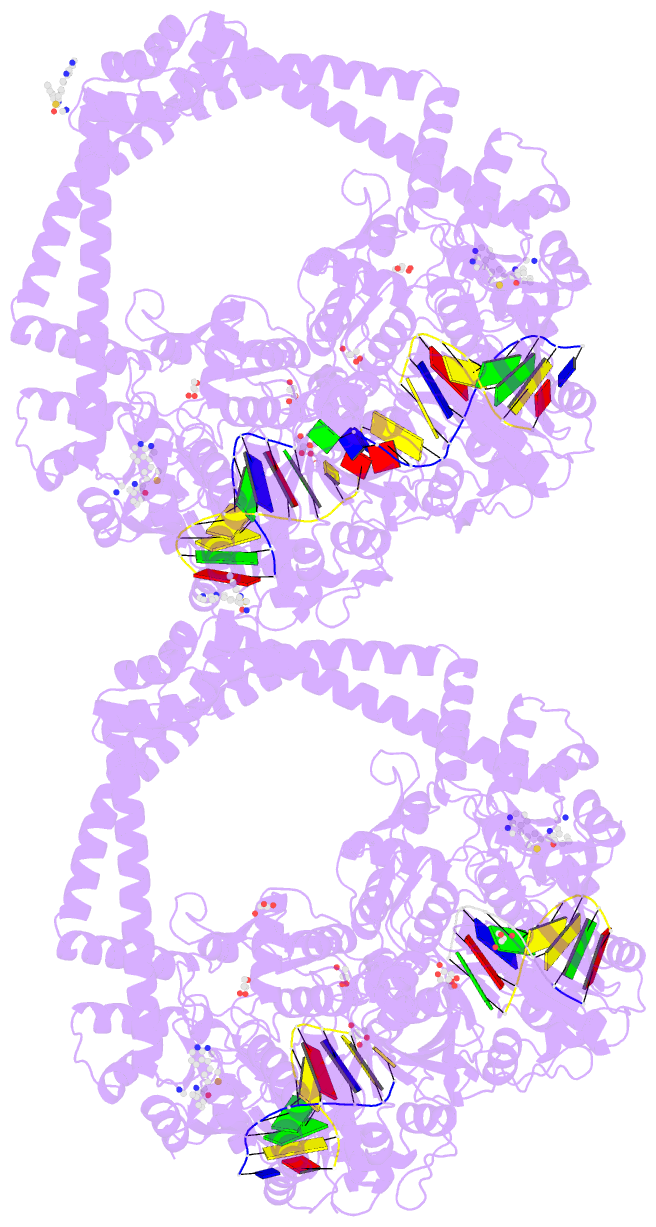Summary information and primary citation
- PDB-id
- 5npk; DSSR-derived features in text and JSON formats
- Class
- isomerase
- Method
- X-ray (1.98 Å)
- Summary
- 1.98a structure of thiophene1 with s.aureus DNA gyrase and DNA
- Reference
- Chan PF, Germe T, Bax BD, Huang J, Thalji RK, Bacque E, Checchia A, Chen D, Cui H, Ding X, Ingraham K, McCloskey L, Raha K, Srikannathasan V, Maxwell A, Stavenger RA (2017): "Thiophene antibacterials that allosterically stabilize DNA-cleavage complexes with DNA gyrase." Proc. Natl. Acad. Sci. U.S.A., 114, E4492-E4500. doi: 10.1073/pnas.1700721114.
- Abstract
- A paucity of novel acting antibacterials is in development to treat the rising threat of antimicrobial resistance, particularly in Gram-negative hospital pathogens, which has led to renewed efforts in antibiotic drug discovery. Fluoroquinolones are broad-spectrum antibacterials that target DNA gyrase by stabilizing DNA-cleavage complexes, but their clinical utility has been compromised by resistance. We have identified a class of antibacterial thiophenes that target DNA gyrase with a unique mechanism of action and have activity against a range of bacterial pathogens, including strains resistant to fluoroquinolones. Although fluoroquinolones stabilize double-stranded DNA breaks, the antibacterial thiophenes stabilize gyrase-mediated DNA-cleavage complexes in either one DNA strand or both DNA strands. X-ray crystallography of DNA gyrase-DNA complexes shows the compounds binding to a protein pocket between the winged helix domain and topoisomerase-primase domain, remote from the DNA. Mutations of conserved residues around this pocket affect activity of the thiophene inhibitors, consistent with allosteric inhibition of DNA gyrase. This druggable pocket provides potentially complementary opportunities for targeting bacterial topoisomerases for antibiotic development.





